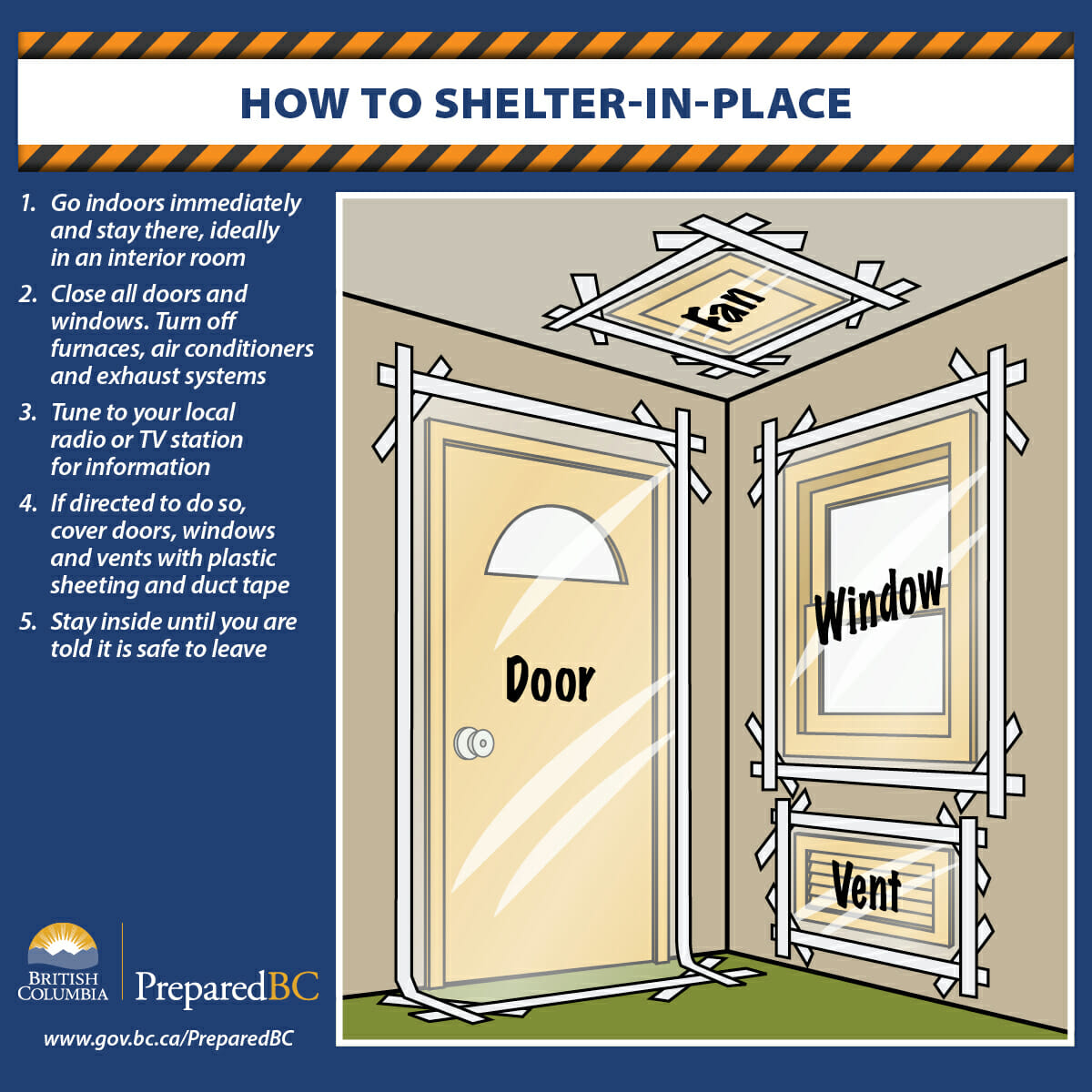For some emergencies, such as a hazardous material spill, it may be safest to stay inside your home. Shelter in place means staying indoors with windows and doors shut, ideally in a room without windows.
Be ready for this possibility by pre-identifying rooms and having plastic sheeting and duct tape to seal cracks around windows and doors. You may be asked to shelter in place because of an active shooter; poor air quality; severe weather; or chemical, radiological, or other hazard.
How will I be notified?
Shelter In Place notifications are communicated in the same way as other emergencies. Learn how to Stay Informed during emergencies in Whistler.
- Municipal website: www.whistler.ca
- Twitter: @rmwhistler
- Facebook: @rmowhistler
- Local Radio: Mountain FM 102.1 & Whistler FM 101.5
- Facebook: PiqueNewsmagazine
In-person notification
If you live or work in the area where the emergency is occurring and emergency officials think you may be at risk, they may come to your door to issue instructions. It is important to follow the instructions they give you. If there isn’t enough time or resources to issue door-to-door notifications emergency officials drive though the affected neighbourhoods providing instructions over a loud speaker.
How do I shelter in place?
Shelter in place at home
- If instructed to shelter in place, close and lock all windows and exterior doors.
- Turn off all fans, vents, and heating and air conditioning systems and close any fireplace dampers.
- If possible, take refuge in a small, interior room, with few or no windows. Additional protection can be provided for window and door openings by purchasing plastic and sealing with duct tape.
- Although most shelter in place orders usually last a few hours, take your family emergency kit into the room with you, so you and your family and pets have a supply of food, bottled water, first aid supplies and medications on hand.
- Have a working radio available, so you can Stay Informed and know when it’s safe to come out or if you need to evacuate the area.
Shelter in place at work
- Close the business and ask all staff, customers or visitors to stay inside the building.
- Close and lock all doors, windows and any other openings to the outside.
- Turn off, seal or disable all building mechanical systems, such as fans, heating and air conditioning systems and systems that automatically supply fresh air.
Avoid rooms with large windows or mechanical equipment like ventilation blowers or pipes, as it might not be possible to seal off this equipment from the outdoors. Stay Informed and know when it’s safe to come out or if you need to evacuate the area.

Emergency preparedness
Procedures and supplies for sheltering in place should be part of your household emergency preparedness plan and emergency kit. Including shelter in place instructions in your emergency plans means that you will know what to do if a shelter in place order is issued fro your neighborhood.

